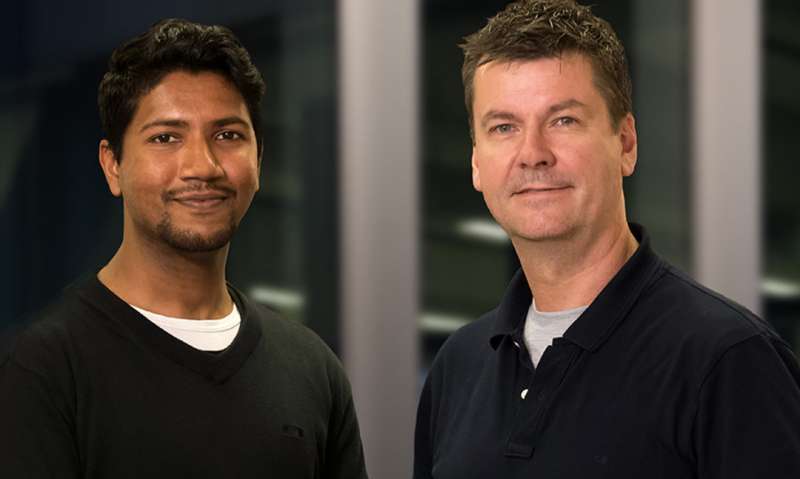It takes a village—How researchers built their own microscope to decipher 'superbugs'

A hand-made super-microscope—capable of seeing the actual building blocks of a bacterial cell wall—has helped Monash researchers decipher how bacteria are able to literally build a wall against the immune system, leading to often deadly disease.
One of the keys to understanding antimicrobial-resistant "superbugs" is to see in great detail the outer surface that they present to the human immune system. A team led by Professor Trevor Lithgow, from the Monash Biomedicine Discovery Institute, has accomplished the first nanoscale interrogation of the wall of the bacteria Escherichia coli (E. coli), discovering highly-organised precincts of "beta-barrel assembly machines", that build the bacterial cell surface.
The work, published today in Cell Reports, is, according to Professor Lithgow, "a big step in knowing how these bacteria form a wall against the immune system—and also a big step towards stopping the superbugs in their tracks."
Super-resolution microscopy, which won its developers the Nobel Prize in 2014, is a technique that can "see" beyond the diffraction of light, providing unprecedented views of cells and their interior structures and organelles.
Even the most accurate light microscopes are unable to see the surface features of a live superbug, so when Professor Lithgow heard that Dr. Toby Bell, head of the Single Molecule and Super-Resolution Fluorescence Group, had hand-built a super-resolution microscopy in his lab, they hatched a plan to create and optimise a super resolution microscope, called STORM, that could see single molecules in a bacterium.
"Toby and his team were amazing in what they installed at the Monash Micro Imaging facility," Professor Lithgow recalls.
While there are other super resolution microscopes elsewhere, Professor Lithgow believes it is unusual to have one tailor made to look at the landscape of a bacterial cell wall.
Critical to the five-year project was the work of Ph.D. student, and co-first author Dilshan Gunasinghe.
"Dilshan pushed the technology to its limit through the preparation of samples of bacteria, and working with analyst Keith Schulze who rewrote the software so the microscope could drill down to the nano-scale," Professor Lithgow said.
The audacious project brought together biochemists, microscopists, physicists, biologists and computer programmers to visualize what had never been seen before, in what "will provide researchers with key knowledge to disarm superbug resistance to the immune system," Professor Lithgow said.
More information: Sachith D. Gunasinghe et al, The WD40 Protein BamB Mediates Coupling of BAM Complexes into Assembly Precincts in the Bacterial Outer Membrane, Cell Reports (2018). DOI: 10.1016/j.celrep.2018.04.093
Journal information: Cell Reports
Provided by Monash University



















